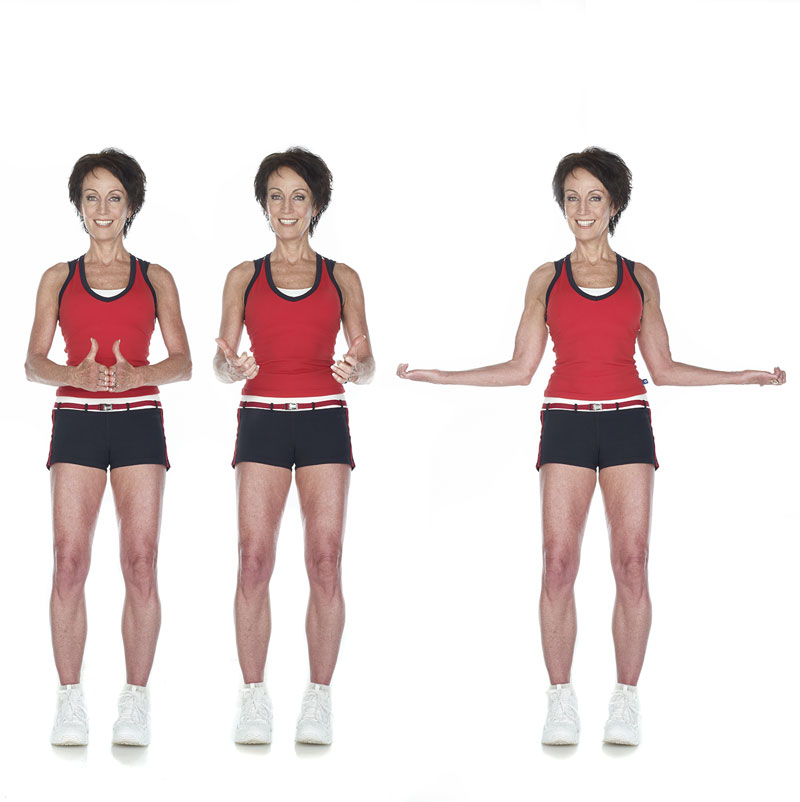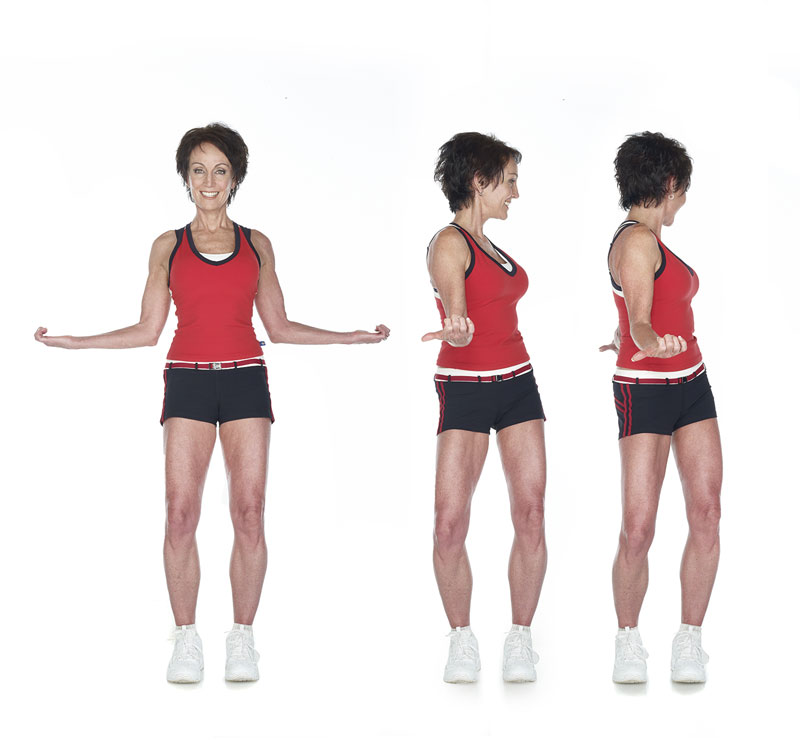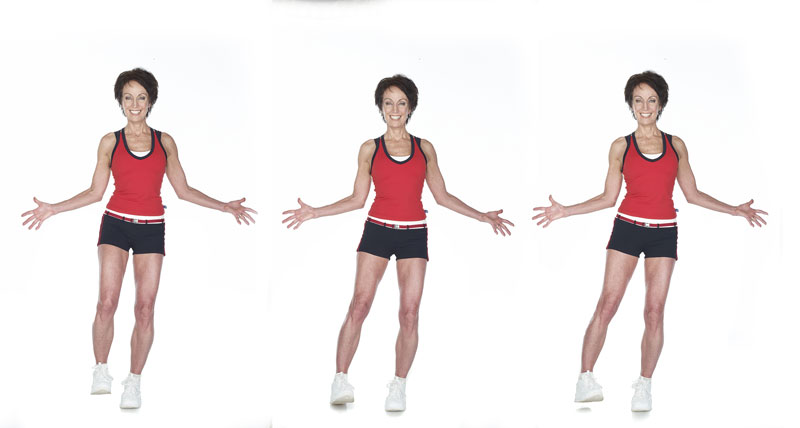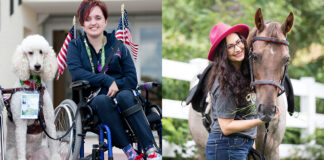Teresa Tapp has been creating low-impact exercise routines for equestrians and other for the past 30 years She believes a strong mind-body connection is necessary to achieve success in the saddle while avoiding injury.
1. Clap Away

Teresa Tapp designed the Clap Away exercise to help decrease upper body tension and inflammation throughout the body. After each clap, fold your fingers with your thumbs on top, the same way you would hold the reins when riding, and rotate your arms outward with your elbows still bent.
To build a stronger back, Tapp recommends performing it against a wall. “When you’re up against a wall, press your lower back and shoulders into it with full contact—no air space,” says Tapp. “Bending your knees deeper will make it easier to tuck and curl your lower back against the wall.”
2. Tuck Twist and Turn

Tuck, Twist and Turn, is great for keeping your spine supple and strengthening its supporting muscles. With your fingers curled, thumbs stretching back, and your arms rotated out as in the first exercise, tuck your tailbone with your knees slightly bent and turned out with feet hip-width apart. Twist at the waist until your shoulders are perpendicular to their starting point. Repeat in the other direction. Form tip: Tighten your glutes and push your opposite knee out when turning your shoulders.
Tapp credits this exercise for keeping her back strong, flexible and pain-free.
3. Core Balance

Tapp created the Core Balance exercise to build a stronger core, as well as trim outer thigh muscles. Lift one foot at a time while rotating your toes inward. Keep your supportive knee bent and pointing out toward your little toe at all times.
“Focus on pressing your heel down and pulling up your toes at all times,” says Tapp. “Make sure to lead with your heel during each leg lift for greater core activation.”
She also recommends muscle activation to increase a rider’s kinetic awareness through the arms, legs and core. Spreading your fingers apart (“jazz hands”) not only stretches muscles between fingers, it also increases activation of the latissimus dorsi muscle along the mid-back, as well as all arm muscles, especially while mounted. It is difficult not to engage the back and abdominal muscles when stretching the fingers.
A similar foot movement (“jazz toes”) not only stretches muscles between toes, it also increases core activation, as well as all leg muscles.
Back to Ride Without Pain >>
This article originally appeared in the March 2014 issue of Horse Illustrated. Click here to subscribe.





